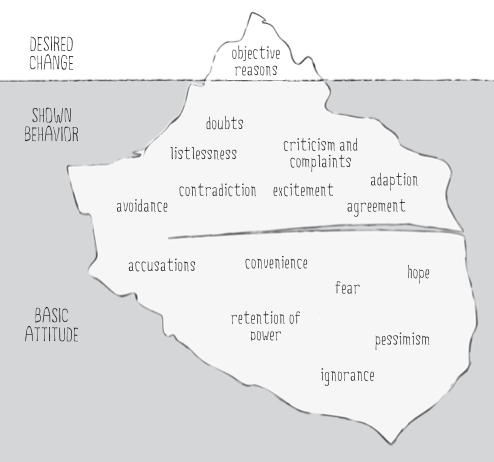The iceberg of change
My blogpost, “Do I have to do that? Can I do that? Do I want to do that?” was about these three questions asked by all involved in a change process. Not surprisingly the answers are rarely purely rational in nature but also involve emotions to a great extent. That is simply the ways things are when human beings are involved. And the illustration of the iceberg of change shows this very clearly:
The image shows that the substantive reasons for change, conveying strategies and objectives or the representation of a project plan usually only make for a fraction of what starts moving during intensive phases of change. The fact that many change projects are shipwrecked can be attributed to the fact that these projects are often focused only on the surface of the issue. And also due to the fact that the focus is restricted on account of poor communication between the captain, the officers and crew. However, should a change initiative only encompass the infamous tip of the iceberg, one need not be surprised if the Titanic of change goes under.
Be it the much quoted seventh of the iceberg we are seeing or a little more or less is of no consequence – the fact is that by far the largest part lies beneath the surface of pure rationale. The advantage that proponents of change have over the captain of a ship is the fact that large parts of the iceberg can suddenly emerge, become visible and wait to be dealt with – ignoring them won’t make them go away.
